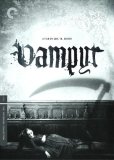| Reviews & Columns |
|
Reviews DVD TV on DVD Blu-ray 4K UHD International DVDs In Theaters Reviews by Studio Video Games Features Collector Series DVDs Easter Egg Database Interviews DVD Talk Radio Feature Articles Columns Anime Talk DVD Savant Horror DVDs The M.O.D. Squad Art House HD Talk Silent DVD
|
DVD Talk Forum |
|
|
| Resources |
|
DVD Price Search Customer Service #'s RCE Info Links |
|
Columns
|
|
|
Vampyr - Criterion Collection
Though largely eluding popular acclaim while he was alive, Danish filmmaker Carl Theodor Dreyer is now recognized as a master of early film. His The Passion of Joan of Arc (1928) is one of the most moving silent films ever made, and Day of Wrath (1943), made in Denmark during the Nazi occupation, is a brooding and intense film that is one of the best films to come out of Europe during that troubled time. For the film after The Passion of Joan of Arc, Dreyer chose to dabble in the horror genre, which was quite popular at the time. The result is Vampyr (1932), an avant-garde film that, while difficult to understand on first viewing, is filled with the interesting images and moody atmosphere that his films are noted for. Because of the unusual narrative style, people searching for a straight vampire movie will likely be disappointed, but those willing to let themselves be carried away by Dreyer's nightmare-like film will be richly rewarded.
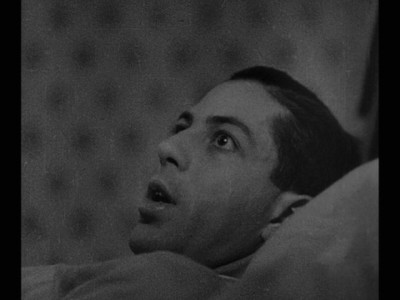
Allan Grey (Julian West) is a young man who has a healthy interest in the occult and supernatural. While traveling across the countryside he spends the night at an inn, and strange things start to happen. An old man enters his room (or is it just a dream) and admonishes Allan the "The girl mustn't die." The man then leaves him a parcel with written instructions to only open it upon his death.
The next day Allan wanders away from the inn and discovers shadows that are not cast by any figure...a one-legged soldier's shadow walks across a room and climbs a ladder only to find it's human 'host' to join it once more. A phantom band plays until a woman yells for them to be quite. Allan follows a series of these odd shadows to an old castle where he discovers the man who entered his room the night before, just in time to see him drop dead.
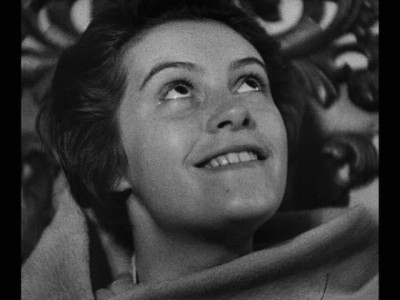
The man's daughter is suffering from a strange case of anemia, and nothing the doctor does improves her condition. Upon opening the box that was left in his room, Allan discovers a book on vampires and how they operate. After having an out of body experience while giving blood, Allan tries to cure the area of the curse of the vampire.
I really, really like this film, but I'll be the first to admit that it's not for everyone. It's often touted as a horror film, which is very misleading. The film isn't so much horrific as it is eerie and unsettling. It is filmed in soft focus and much of it has a dream-like quality and the skewed logic that often occurs in dreams.
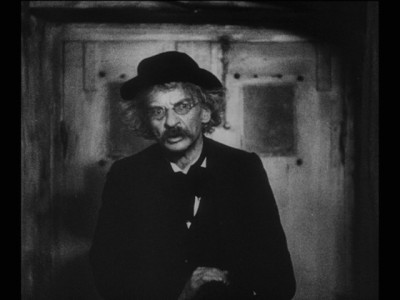
Dreyer scholar David Bordwell in his book The Films of Carl Theodor Dreyer warns "the film is a very difficult one simply to follow." That is very true. It plays more like an art film or experiment than a narrative film. The plot is meandering, and it's hard to pin down just what Allan is doing and what he is seeing. From a strictly narrative point of view the film is very confusing. Take this exchange between Allan and a doctor he encounters while exploring a strange house:
Doctor: Did you hear that?
Allan: Yes. The child.
Doctor: The child?
Allan: Yes, the child!
Doctor: There's no child here.
[long pause] Allan: But the dogs!
Doctor: There are no children or dogs here!
Allan: No?
Doctor: No. Good night.
Allan: Good night.
It would be easy to write this film off as a series of unrelated events that don't mean anything, except for the fact that there is a story buried in the movie. Instead of playing with time to make the film more obtuse (like Quentin Tarantino did in Pulp Fiction) however, Dreyer simply presents scenes that Allan (and therefore the viewer) can not understand for lack of context. In many cases (and this is one of the strokes of genius of this film) he simply eliminates showing the cause of an event, only the effect. The delivery of a vial of liquid to the doctor seems innocuous enough, but when the reasons behind the delivery are uncovered the scene makes sense and takes on a sinister meaning. As the movie progresses the holes start to fill themselves in, and on subsequent viewings the story presents itself much more clearly.
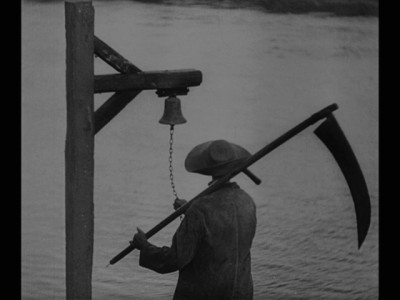
Many films aren't really worth putting that much effort into. Vampyr is different however because it is filled with eerie images that are beautiful and haunting as well as ripe for interpretation. The image of a man holding a scythe and climbing onto a small ferry seems innocent enough, but it's hard not to think of him as death incarnate. Likewise the smile of a sick girl seems sinister and evil. Dreyer masterfully made the film worth watching even when the plot wasn't evident. When the narrative has been discerned however, viewers realize that they are watching a true master at work.
The DVD:
Audio:
Filmed with an experimental sound system in the early days of the 'talkies', the sound on this disc is about what you'd expect. The dynamic range is very limited and the voices sound tinny and weak. The music is likewise on the anemic side, and the score does not sound full and forceful. On the positive side the soundtrack has been cleaned up and there isn't any hiss or background noise to distract from the film. Given what they had to work with, this is not a bad sounding track.
Video:
People familiar with the old Image release of this film will be very pleased to hear that the Criterion release is a great improvement. The Image release had a black bar at the bottom (presumably to blot out the subtitles on the print they were using) where burned in subtitles appeared. That's no longer a problem. This version presents the film without that horrid bar and preserves the original aspect ratio of 1.19:1. (The Image disc is cropped to 1.33:1.) The picture is much cleared and more detailed than the Image version also.
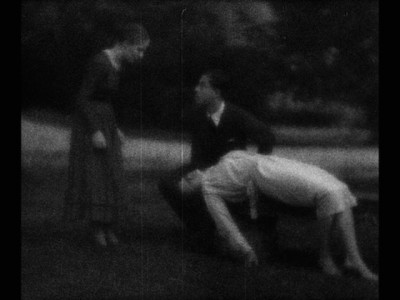
That said, don't expect an immaculate print. First time viewers are likely to be disappointed in the scratched and dirty print that is very soft and indistinct (especially in the exterior scenes...it's better in the interior shots) when compared to other films. There is a significant amount of grain in the image too and it is often distracting. The contrast is just average with black suits having no detail and the details getting lost in the highlights on occasion. A lot of this is the way Dreyer intended the film to look. He wanted it to appear like a dream, so he partially exposed the film before shooting some scenes. In other he placed gauze over the lens to create a fog over the whole image. Another reason for the less than stellar image quality is that this is a rare film. There are only a few copies in existence and this restoration was pieced together from several different sources. This is likely the best the film will look, baring a better print of negative being discovered.
Extras:
Criterion usually packs a good number of extras on their upper price-tier releases, and this one is no exception. On disc one there is the movie itself as well as a good commentary by film historian Tony Rayns. Rayns discuses the film's unique visual style and unusual method of editing and story telling. He also explains some areas of the film that are a little obtuse and hard to understand, which is helpful.
Disc two contains a documentary by Jörgen Roos, Carl Th. Dreyer (1966). This half hour look at the director's work and his life is in German but has optional English subtitles. There's a second featurette, a 'visual essay' by scholar Casper Tybjerg who traces the surrealist style of the film and discusses Dreyer's influences through stills and film clips. Dreyer himself can be heard reading an essay of filmmaking that was recorded in 1958 too.
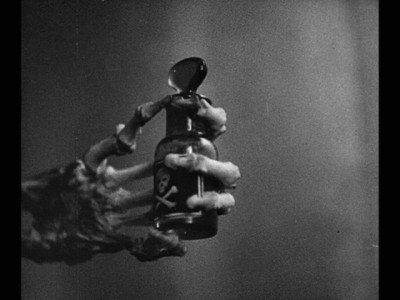
The most interesting bonus item isn't found on the discs however. There's a 46-page booklet that comes with the set which features some excellent essays about Dreyer and the film as well as a 200+ page book which features Dreyer's script as well at the story "Carmilla," on which the film is supposedly based (thought there are few similarities.)
On the down side, the Masters of Cinema R2 release of this film also included a commentary track with director Guillermo del Toro (Pan's Labyrinth) that is missing from this edition. That's unfortunate since I would have enjoyed hearing what he had to say about the film.
Final Thoughts:
This is an amazing film, though it's not for everyone. It's a movie that viewers have to work at to understand, and screening this film isn't a passive event. Ultimately Dreyer has crafted a magnificent work, one that is both haunting and engaging. The Criterion version of this film, while not near the video quality of The Passion of Joan of Arc is still vastly superior to any other version on home video. Add to that a wonderful set of bonus features and you have a release that is Highly Recommended.
|
| Popular Reviews |
| Sponsored Links |
|
|
| Sponsored Links |
|
|
| Release List | Reviews | Shop | Newsletter | Forum | DVD Giveaways | Blu-Ray | Advertise |
|
Copyright 2024 DVDTalk.com All Rights Reserved. Legal Info, Privacy Policy, Terms of Use,
Manage Preferences,
Your Privacy Choices | |||||||









